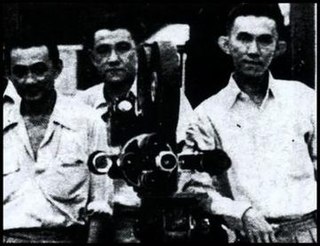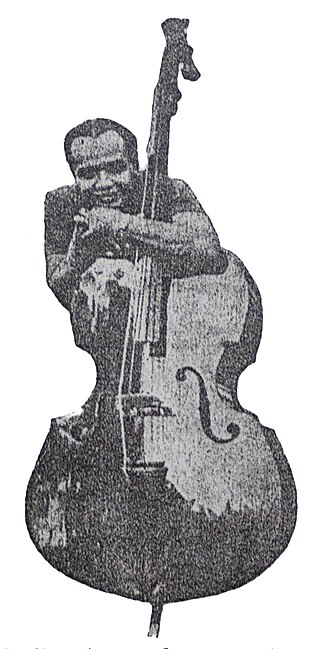
The Qara Khitai, or Kara Khitai, also known as the Western Liao, officially the Great Liao, was a dynastic regime based in Central Asia ruled by the Yelü clan of the Khitan people. Being a rump state of the Khitan-led Liao dynasty, Western Liao was culturally Sinicized to a large extent, especially among the elites consisting of Liao refugees.

Chagatai Khan was a son of Genghis Khan and a prominent figure in the early Mongol Empire. The second son of Genghis's wife Börte, Chagatai was renowned for his masterful knowledge of Mongol custom and law, which he scrupulously obeyed, and his harsh temperament. Because Genghis felt that he was too inflexible in character, most notably never accepting the legitimacy of his elder brother Jochi, he excluded Chagatai from succession to the Mongol throne. He was nevertheless a key figure in ensuring the stability of the empire after Genghis's death and during the reign of his younger brother Ögedei Khan.

The siege of Baghdad took place in early 1258 at Baghdad, the historic capital of the Abbasid Caliphate. After a series of provocations from its ruler, Caliph al-Musta'sim, a large army under Hulegu, a prince of the Mongol Empire, attacked the city. Within a few weeks, Baghdad fell and was sacked by the Mongol army—al-Musta'sim was killed alongside hundreds of thousands of his subjects. The city's fall has traditionally been seen as marking the end of the Islamic Golden Age; in reality, its ramifications are uncertain.
The following are the association football events of the year 1979 throughout the world.

Genghis Khan, also known as Chinggis Khan, was the founder and first khan of the Mongol Empire. After spending most of his life uniting the Mongol tribes, he launched a series of military campaigns, conquering large parts of China and Central Asia.

Avraham Biran was an Israeli archaeologist, best known for heading excavations at Tel Dan in northern Israel. He headed the Institute of Archaeology at Hebrew Union College in Jerusalem for many years.

Paul Ian Biran is an Israeli mathematician. He holds a chair at ETH Zurich. His research interests include symplectic geometry and algebraic geometry.

Misbach Yusa Biran was an Indonesian writer, director and columnist who pioneered the Indonesian film archives.

Albert Balink was a Dutch journalist and filmmaker who contributed to early Indonesian cinema. Born in the Netherlands, he began a career in film journalism in the Dutch East Indies. A self-taught filmmaker, in the mid-1930s, he released a documentary and two feature films, before immigrating to the United States and resuming his journalistic career.

Hajji Raden Mochtar, often credited as Rd Mochtar, was an Indonesian actor. Of noble descent, Mochtar was discovered by Albert Balink and first cast in the commercial failure Pareh (1936). Rising to popularity after the release of Terang Boelan the following year, he spent nearly sixty years in film, while also becoming a businessman and farmer.

Terang Boelan is a 1937 film from the Dutch East Indies. Written by Saeroen, directed by Albert Balink, and starring Rd Mochtar, Roekiah and Eddie T. Effendi, Terang Boelan follows two lovers who elope after one is almost forced to marry an opium smuggler. The film was shot in the Indies and Singapore, and was partially inspired by the 1936 Hollywood film The Jungle Princess. It was aimed at native audiences and included keroncong music, which was popular at the time, and several actors from Balink's previous work Pareh (1936).

The Wong brothers were three ethnic Chinese film directors and cameramen active in the cinema of the Dutch East Indies. The sons of an Adventist preacher, the brothers – Nelson (1895–1945), Joshua (1906–1981), and Othniel (1908–1986) – received much of their education in the United States before going to Shanghai and establishing The Great Wall Productions.

Raden Mas Kartolo was an Indonesian actor and songwriter. Born in Yogyakarta to a noble family, he entered the theatre and married the actress Roekiah around 1933. The two, living in Batavia acted in numerous movies together, starting with the 1938 hit Terang Boelan. However, Roekiah was always cast with other actors as her romantic interest. After Roekiah died in 1945, Kartolo brought the family to Yogyakarta and worked with Radio Republik Indonesia until his death. One of his sons, Rachmat Kartolo, went on to be an actor in the 1960s and 1970s.

Michal Biran is an Israeli politician. A member of the Labor Party, she was placed thirteenth on the party's list for the 2013 Knesset elections. She served in Knesset from 2013 to 2019, in the 19th and 20th Knessets.

Sejarah Film 1900–1950: Bikin Film di Jawa is a 2009 history of the cinema of the Dutch East Indies written by Misbach Yusa Biran. It was published by Komunitas Bambu in collaboration with the Jakarta Arts Council and well received. The book was written by Biran before his death, three years later.

Gagak Item is a 1939 bandit film from the Dutch East Indies directed by Joshua and Othniel Wong for Tan's Film. Starring Rd Mochtar, Roekiah, and Eddy T. Effendi, it follows a masked man known only as "Gagak Item". The black-and-white film, which featured the cast and crew from the 1937 hit Terang Boelan, was a commercial success and received positive reviews upon release. It is likely lost.
Itamar Biran is an Israeli Olympic alpine ski racer who represents Israel in international competitions. He competes in giant slalom, super-G, slalom and Combined.
The 2008–09 FC Bayern Munich II season is the first season they participated in the 3. Liga.
















